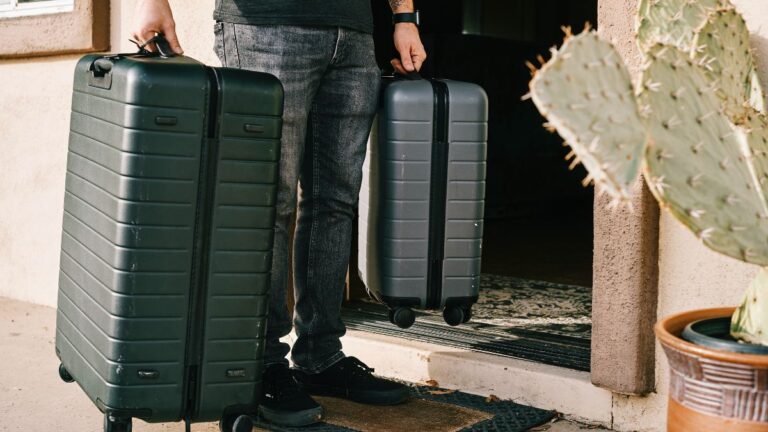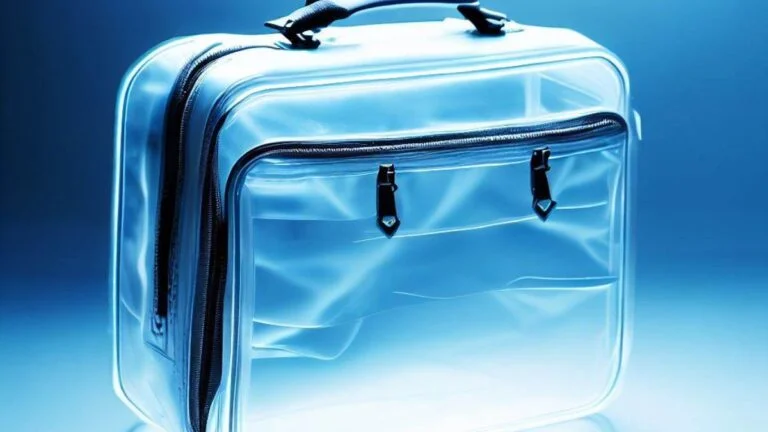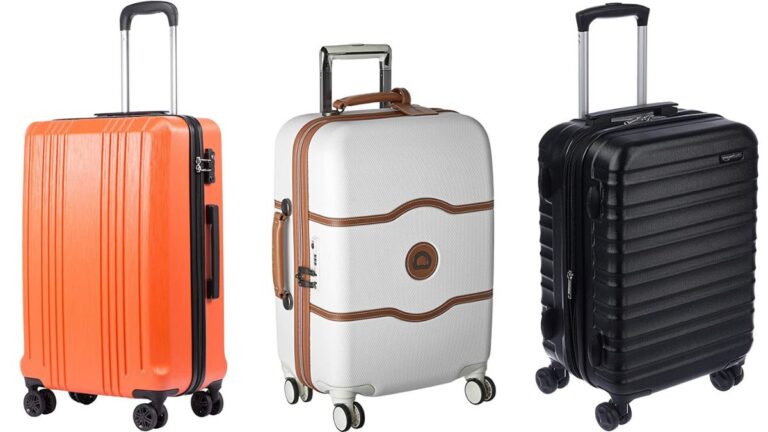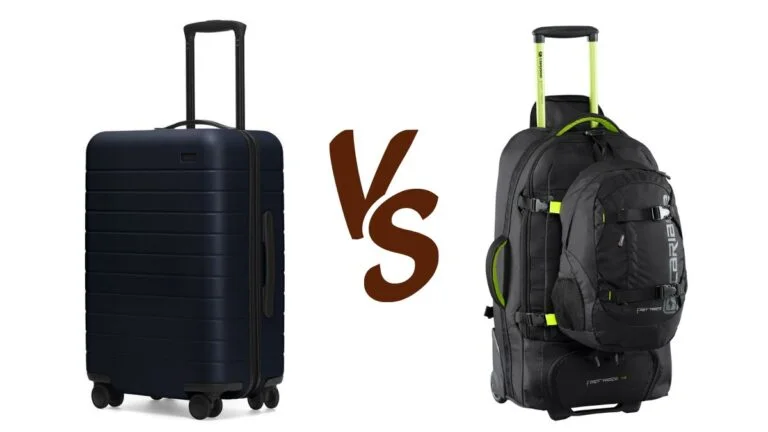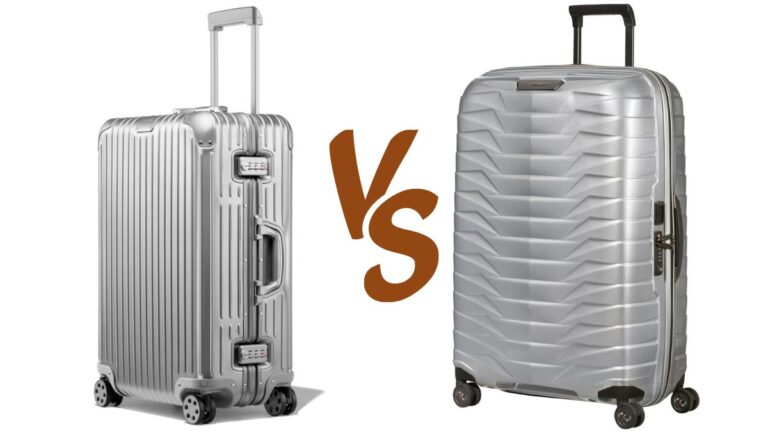How Big is a Hold Luggage Bag? Understanding Dimensions & Capacity
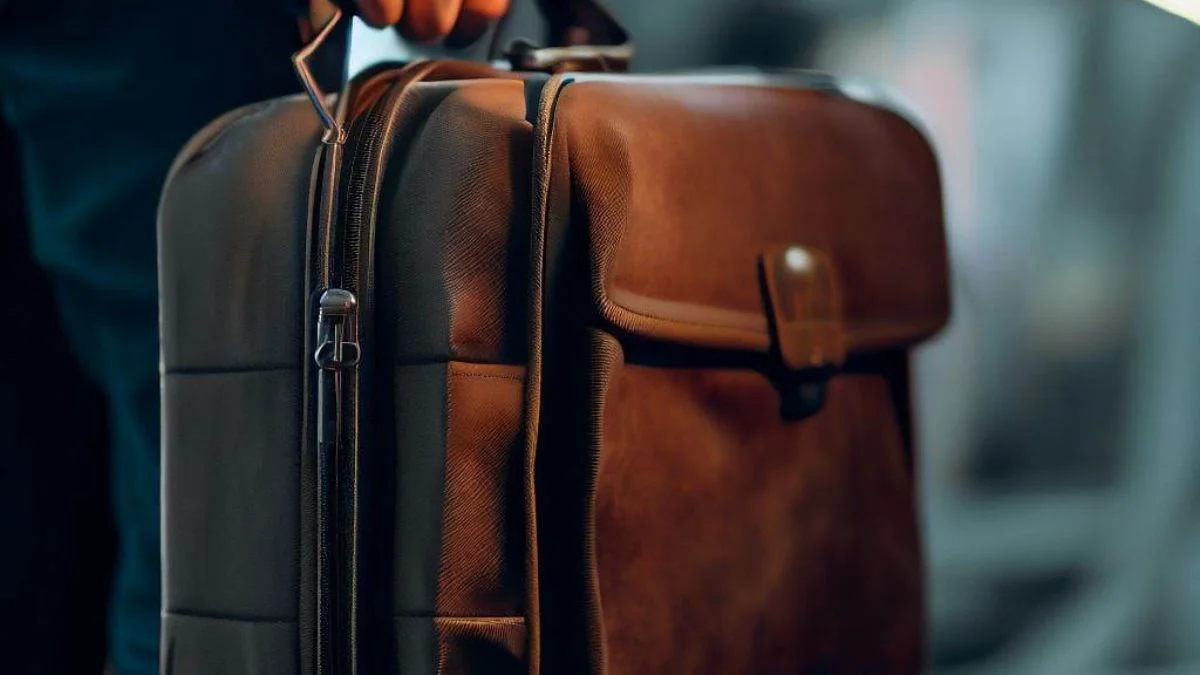
As participants in Amazon Associates and other programs, we earn from qualifying purchases. This comes at no additional cost to you. For more details, see our Affiliate Disclosure.
Navigating the world of travel can often feel like trying to solve an intricate puzzle, with the biggest piece being your hold luggage bag. It’s more than just a container for your essentials; it’s a mobile closet, a trusted travel companion, and it needs to be just right. But what does “right” mean in this context? As it turns out, understanding the dimensions and capacity of a hold luggage bag is a crucial part of making your journey smooth and hassle-free.
This article aims to untangle the complexities of hold luggage sizes, helping you make an informed decision that fits perfectly with your travel plans.
Understanding Dimensions: Height, Width, Depth
Before we dive into the complexities of luggage dimensions, it’s essential to understand the basics: height, width, and depth. In simple terms, these three dimensions describe the physical size of your luggage.
- Height: Measured from the bottom to the top of the bag, including the wheels and handle in their collapsed state. This dimension determines whether your luggage will fit in the overhead bin or under the seat in front of you.
- Width: The measurement across the front of the bag, from one side to the other. This dimension plays a crucial role in determining how much space your luggage will take up in the car trunk, bus, or train compartment.
- Depth: This is the measurement from the front to the back of the bag. The depth determines the bag’s overall volume and, consequently, how much it can hold.
Understanding these dimensions is critical to choosing the right luggage for your needs, especially as they relate to airline restrictions. It’s worth noting that when you check the luggage dimensions online or in a store, they are typically listed in the order of Height x Width x Depth.
Now let’s look at a simple comparison table illustrating the standard sizes of various types of luggage:
| Luggage Type | Height (inches) | Width (inches) | Depth (inches) |
|---|---|---|---|
| Carry-on | 22 | 14 | 9 |
| Medium | 25-26 | 17-18 | 10-11 |
| Large | 28-32 | 18-20 | 12-14 |
Please note that the sizes above are just general guidelines. Specific airlines may have their own size restrictions, and some luggage models might vary slightly in size. It’s always best to check the specific requirements of your airline and the details of the luggage you plan to purchase.
How is Luggage Capacity Measured?
Luggage capacity, also known as volume, tells you how much space is available inside your bag to store your belongings. It’s typically measured in liters (L) or cubic inches (in³) and gives a more precise idea than simply looking at the height, width, and depth.
The process of measuring luggage capacity involves a mathematical calculation using the bag’s internal dimensions. While you won’t generally need to calculate this yourself (manufacturers usually provide this information), it’s helpful to understand how it’s done.
For a rectangular or square bag, the volume can be calculated by multiplying its internal height, width, and depth. In other words:
Volume = Height x Width x DepthHowever, this formula gets more complicated for bags that aren’t perfect rectangles or squares, such as backpacks or duffel bags. For these types of luggage, manufacturers use a fill method, where they fill the bag with small pellets or balls and then measure the volume of these materials, giving a more accurate representation of the bag’s real-world capacity.
Remember that the capacity of a bag can be affected by its compartments, pockets, and internal organizing systems. A bag with a large stated capacity might not seem as roomy if it has a lot of built-in compartments taking up space.
Finally, consider your packing habits. If you’re a minimalist packer, a bag with less capacity may work just fine for you. But if you tend to bring a variety of outfits or pack lots of extras, a larger capacity bag may be a better fit.
Knowing the capacity of a bag helps you to visualize the amount of clothing, accessories, and other items you can pack, making it an essential factor to consider when selecting your hold luggage.
Best Hold Luggage Bags
Samsonite Omni PC Hardside Spinner: This durable and sleek hard-shell suitcase is known for its scratch-resistant texture and its lightweight, yet robust, polycarbonate construction. The bag comes with a side-mounted TSA lock for added security and spinner wheels for smooth mobility. It’s available in three sizes (20″, 24″, and 28″) and a range of colors.
Travelpro Maxlite 5 Softside Spinner: The Travelpro Maxlite 5 is a lightweight and durable option with a soft exterior, which gives it a bit more flexibility than hard-shell cases. It features a roomy interior, high-performance ball bearing wheels, and a sturdy PowerScope handle to minimize wobbling. The Maxlite 5 also expands up to 2 inches for extra packing capacity.
Standard Hold Luggage Sizes: A Comparison
When it comes to choosing your hold luggage, it’s important to know that there are general standards for luggage sizes, typically categorized as small, medium, and large. Here is a quick comparison of these standard sizes:
Small or Carry-on Luggage: This is usually the smallest size of luggage that you can bring onto a plane and stow in the overhead compartment. The dimensions are typically around 22 x 14 x 9 inches, including the handles and wheels. However, restrictions on carry-on size can vary greatly among airlines, so it’s always a good idea to check with the specific airline before your trip.
Medium Luggage: Medium-sized luggage usually measures between 23 to 26 inches in height. This size is suitable for travelers who are planning a week-long trip or for those who prefer to have a bit more space for their belongings.
Large Luggage: If you’re going away for more than a week or need to carry a significant amount of clothing and other items, a large suitcase, measuring between 27 to 32 inches in height, is probably your best bet. Just keep in mind that the larger the luggage, the easier it is to surpass airline weight limits, which can lead to extra fees.
| Luggage Size | Typical Dimensions (HxWxD inches) | Ideal For |
|---|---|---|
| Small | 22 x 14 x 9 | Short trips, carry-on |
| Medium | 23-26 x 16-18 x 10-11 | Week-long trips |
| Large | 27-32 x 18-20 x 12-14 | Extended trips, large belongings |
These sizes are general guidelines. Some luggage models might deviate slightly from these standard sizes.
How Airlines’ Luggage Policies Impact Your Choice
Airline luggage policies can greatly influence your choice of hold luggage. Understanding these policies can save you from unexpected issues or additional fees at the airport.
Size Restrictions
Each airline sets its own size restrictions for both carry-on and checked luggage. Exceeding these limits can result in additional fees or even the requirement to check your bag. As we mentioned earlier, typical size limits for carry-on luggage are about 22 x 14 x 9 inches, but this can vary significantly from one airline to another.
For checked luggage, the sum of the height, width, and depth typically must not exceed 62 inches. Always check your airline’s specific policies before packing.
Weight Limits
Weight is another crucial factor in airline luggage policies. Most airlines impose a weight limit on checked luggage, often around 50 pounds (23 kg) per bag for economy passengers.
Overweight luggage can lead to substantial extra charges. While carry-on bags are usually not weighed, they must be light enough for you to lift into the overhead bin without assistance.
Number of Bags
Airlines also limit the number of bags you can carry on or check in. This number can vary depending on the airline, the destination, and the class of service you’re flying.
Fees for Extra Bags
If you’re planning to check more than one bag, or if your bag is oversized or overweight, be prepared to pay additional fees. These can vary greatly among airlines and can add significantly to the cost of your trip.
Understanding your airline’s luggage policies is a vital part of choosing the right luggage. Always check these policies before you pack, and consider them when purchasing new luggage, to ensure a smoother, more stress-free travel experience.
Balancing Bag Size and Personal Travel Needs
Selecting the right size of luggage is not just about adhering to airline policies—it’s also about aligning with your personal travel needs and habits. Here are a few key considerations:
- Duration of Your Trip: Naturally, the longer your trip, the more belongings you’ll need to pack. A small carry-on suitcase might suffice for a weekend getaway, but for a two-week vacation or a business trip with different dress requirements, a medium or large checked bag might be necessary.
- Your Packing Style: Some travelers can fit a week’s worth of items in a carry-on, while others need a checked bag for a three-day trip. Evaluate your packing style—are you a minimalist who only brings essentials, or do you like to have options for every occasion?
- Destination and Weather: The climate and activities at your destination can influence the size of your luggage. Colder destinations require bulkier clothing, which can take up more space. Similarly, if your trip involves a special occasion or a variety of activities that require different types of clothing (e.g., hiking, swimming, fancy dinners), you may need more room.
- Souvenirs and Shopping: Do you plan on bringing home souvenirs or going shopping during your trip? If so, ensure you have extra space or consider packing a foldable duffel bag for additional items.
- Mobility Needs: If your journey involves multiple layovers, public transportation, or walking long distances, a smaller, lightweight suitcase might be more practical. Large bags can be cumbersome to maneuver in crowded places.
Your personal needs and the nature of your trip should guide the size of your hold luggage. It’s all about striking the right balance between meeting airline restrictions and ensuring you have everything you need for your journey.
How Material and Design Affect Luggage Capacity
While dimensions are the primary determinant of luggage capacity, the material and design of a bag can also impact how much you can fit inside. Here’s how:
- Material: Soft-shell luggage is typically made from fabrics that can expand and flex, like nylon or polyester. This flexibility can allow you to squeeze in that last-minute item or accommodate oddly shaped objects better than a hard-shell case. Conversely, hard-shell luggage is rigid and may offer less flexibility, but it generally provides better protection for your belongings.
- Expandability: Some bags come with an expandable feature, which is usually a zipper that, when unzipped, creates more space. It can significantly increase the bag’s capacity, giving you extra room for souvenirs or items acquired during your trip. But be careful – when expanded, your bag might exceed airline size limits.
- Internal Compartments and Organization: Bags with multiple compartments and pockets can help organize your belongings and can sometimes allow you to pack more efficiently. However, they can also reduce the overall packing space if the design is not thoughtful.
- Compression Systems: Some suitcases come with internal compression systems, like straps or fabric flaps, that help condense your clothing and other items, freeing up space.
- Shape and Design: The shape of your luggage can impact how you pack. Rectangular bags can often hold more and allow for more organized packing. Duffel bags or backpacks, with their irregular shapes, can fit oddly shaped items but might not use space as efficiently as more box-shaped luggage.
While the capacity might be your primary focus, don’t forget to consider the durability and quality of the materials and design. The last thing you want is for your bag to tear or break while you’re traveling. The best luggage should offer a balance of good design, quality materials, and adequate capacity.
Essential Tips for Maximizing Your Luggage Space
Even the most spacious luggage can quickly become cramped if not packed efficiently. Here are some essential tips to help you make the most out of your luggage space:
- Roll Your Clothes: Instead of folding your clothes, try rolling them. This method not only saves space but also reduces wrinkles. You can roll socks and underwear inside bigger items like shirts and pants to maximize space.
- Use Packing Cubes: Packing cubes are small, lightweight containers that zip closed. They help to organize your belongings and keep them neat and compact, saving you a surprising amount of space.
- Pack Shoes Wisely: Shoes can take up a lot of space. Try to limit the number of pairs you bring, and consider wearing the bulkiest pair during your travel to save space. Also, utilize the inside of your shoes as storage space for small items like socks, charging cables, or travel-sized toiletries.
- Layer Your Luggage: Layer your items based on their weight. Heavier items, like shoes and toiletries, should go at the bottom near the wheels. Lighter items, like clothes and delicate items, should go on top.
- Use Compression Bags: For bulkier items like jackets or sweaters, consider using compression bags. They can help you reduce the volume of your clothes by removing the air.
- Limit Toiletries: Toiletries can take up a lot of space and can lead to unnecessary weight. Consider using travel-sized items or buying some essentials at your destination.
- Utilize Empty Spaces: Don’t leave any space unused. Fill corners and gaps with smaller items or accessories.
- Avoid Overpacking: Resist the temptation to pack for every possible scenario. Consider your itinerary and pack only what you need.
Packing efficiently can take practice, but with these tips, you’ll be able to maximize the space in your luggage, making your travel experience smoother and more enjoyable.
Picking the Right Size for Different Types of Travel
The right size of luggage can vary greatly depending on the type of trip you’re planning. Let’s explore some common types of travel and the most suitable luggage sizes for each:
- Weekend Trips: If you’re heading out for a weekend, a carry-on bag is usually sufficient. This size is perfect for a couple of outfits, necessary toiletries, and a few extras.
- One-Week Vacations: For one-week trips, a medium-sized suitcase (23-26 inches) is typically suitable. It offers enough space for a week’s worth of clothes and essentials without being overly bulky or difficult to manage.
- Extended Trips: For trips that last two weeks or longer, a large suitcase (27-32 inches) is usually necessary. These bags offer plenty of space for clothing, toiletries, and even souvenirs. Just be mindful of the weight, as it can quickly add up.
- Business Trips: If you’re traveling for business, the size of your luggage can depend on the length of the trip and the type of attire required. For short trips with casual dress codes, a carry-on may be sufficient. For longer trips or those requiring formal wear, consider a medium or large suitcase. A garment bag might also be necessary for suits or dresses.
- Adventure Travel: If you’re going hiking, camping, or engaging in other outdoor activities, you might need specialized luggage like a backpack or duffel bag. The size will depend on the type and length of your adventure, as well as the gear you need to bring.
- Family Travel: Traveling with family, especially with kids, often means packing more items. Large suitcases can help accommodate extra clothes, snacks, toys, and the inevitable souvenirs.
The right luggage size ultimately depends on your personal packing style, the activities you plan to do, the weather at your destination, and any items you plan to bring back. Always consider these factors and your airline’s baggage policies when choosing your luggage size.




